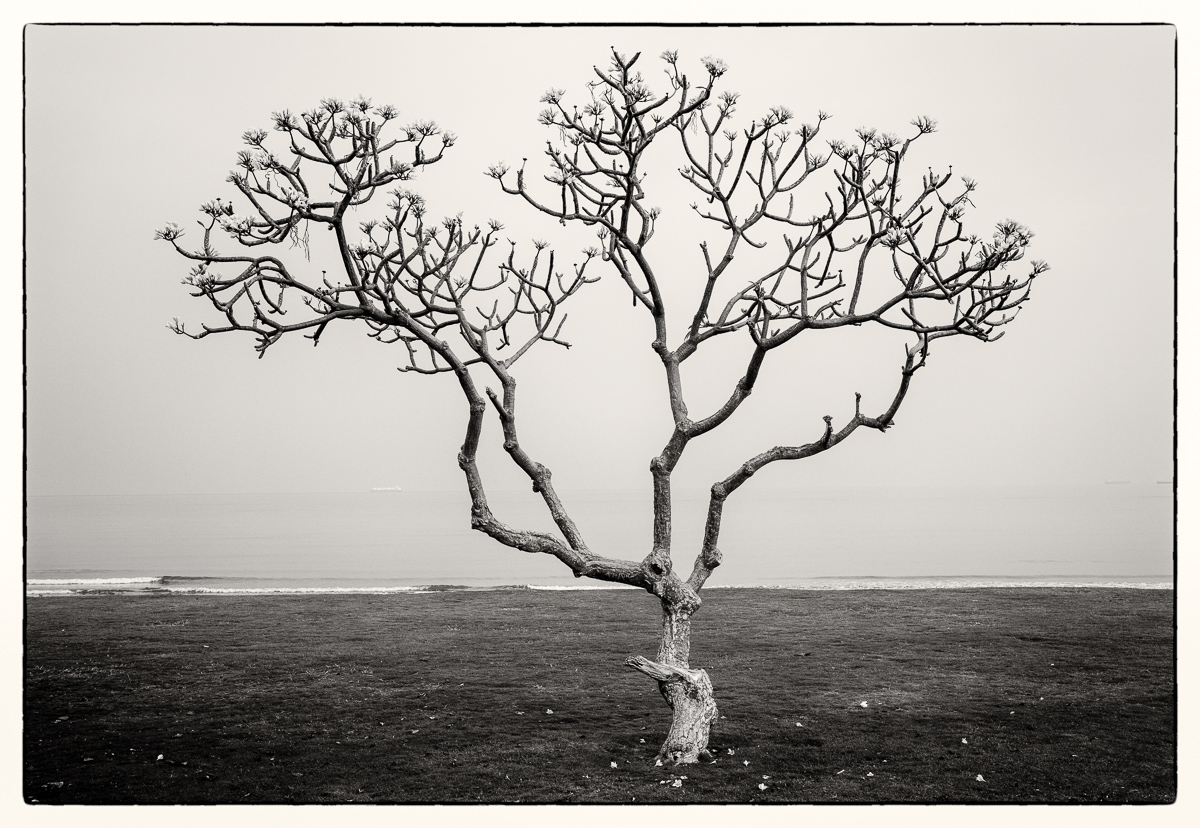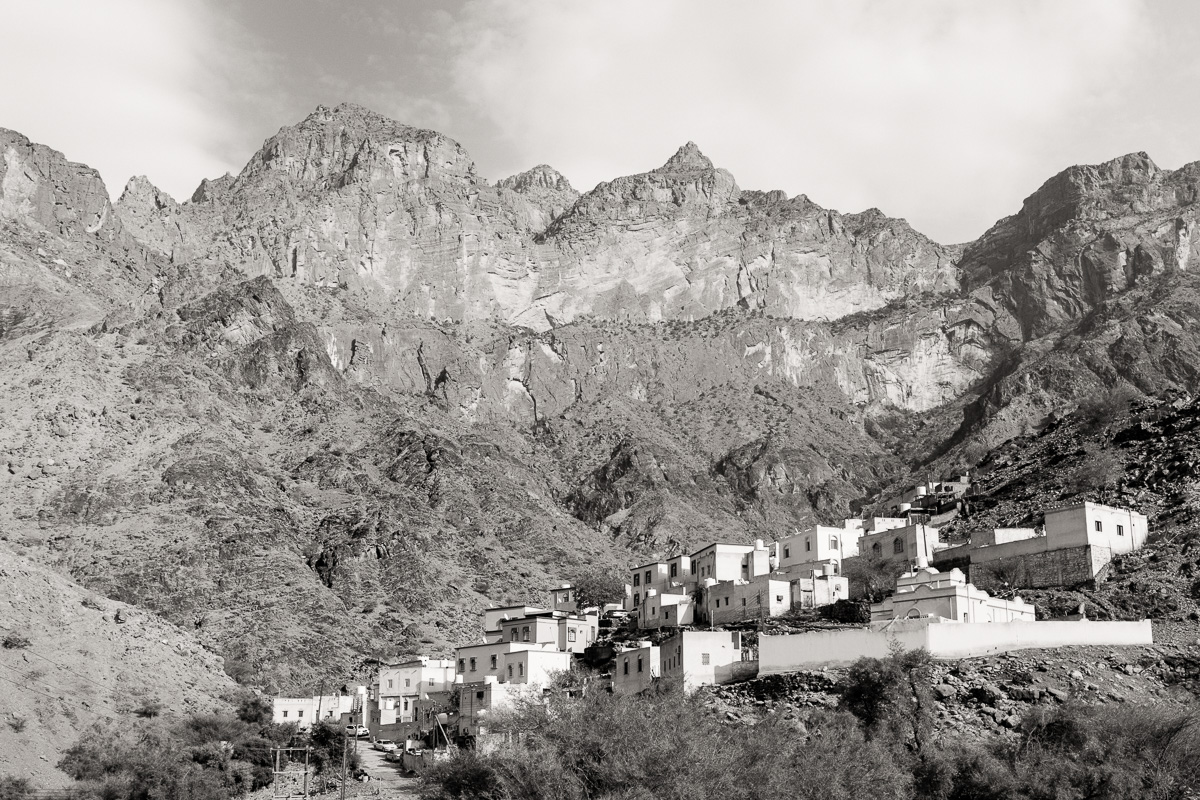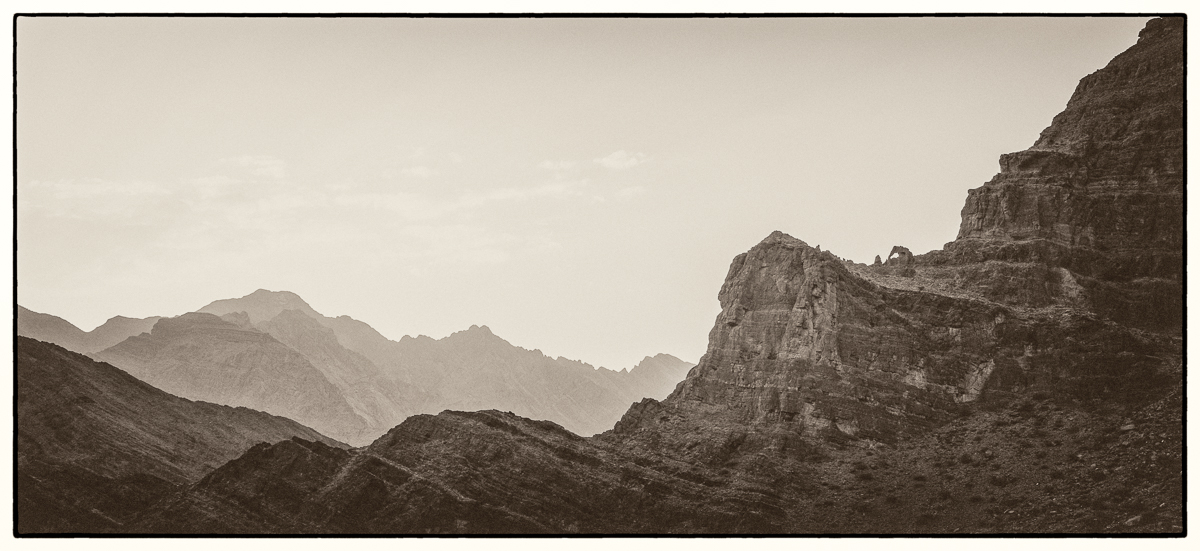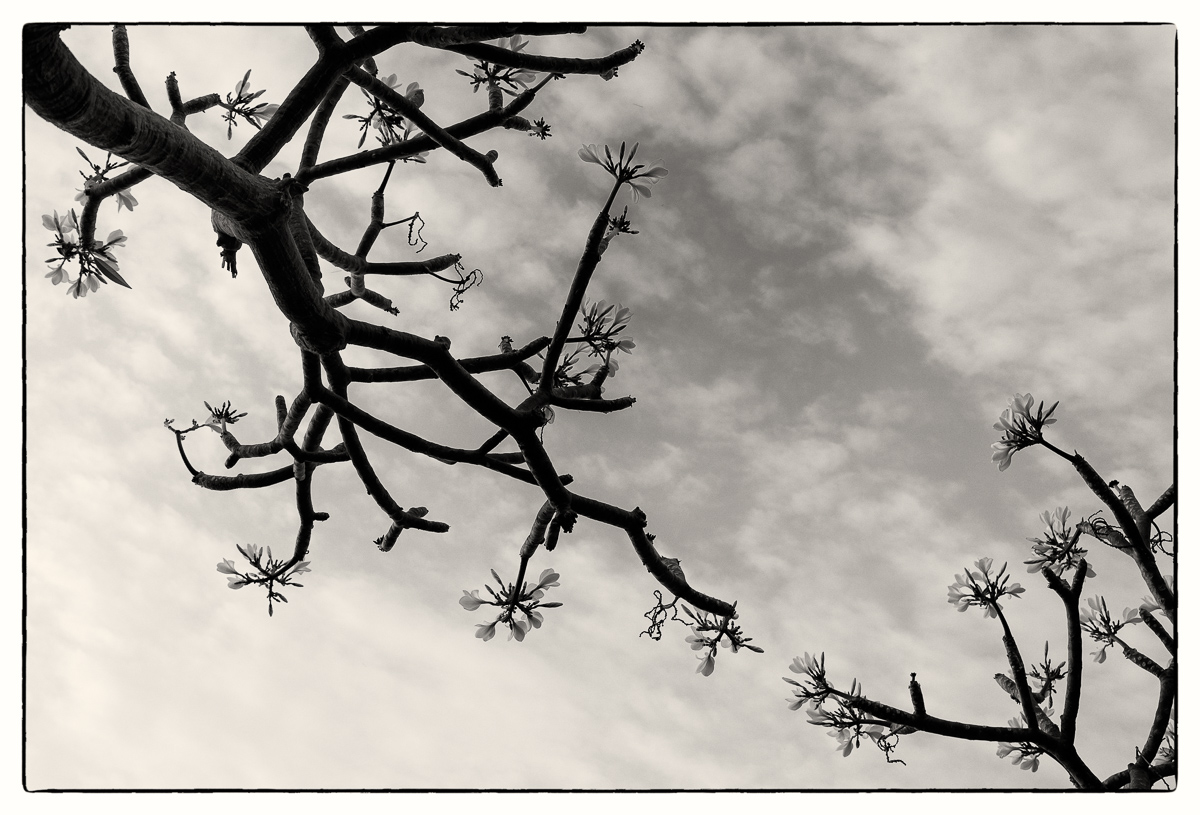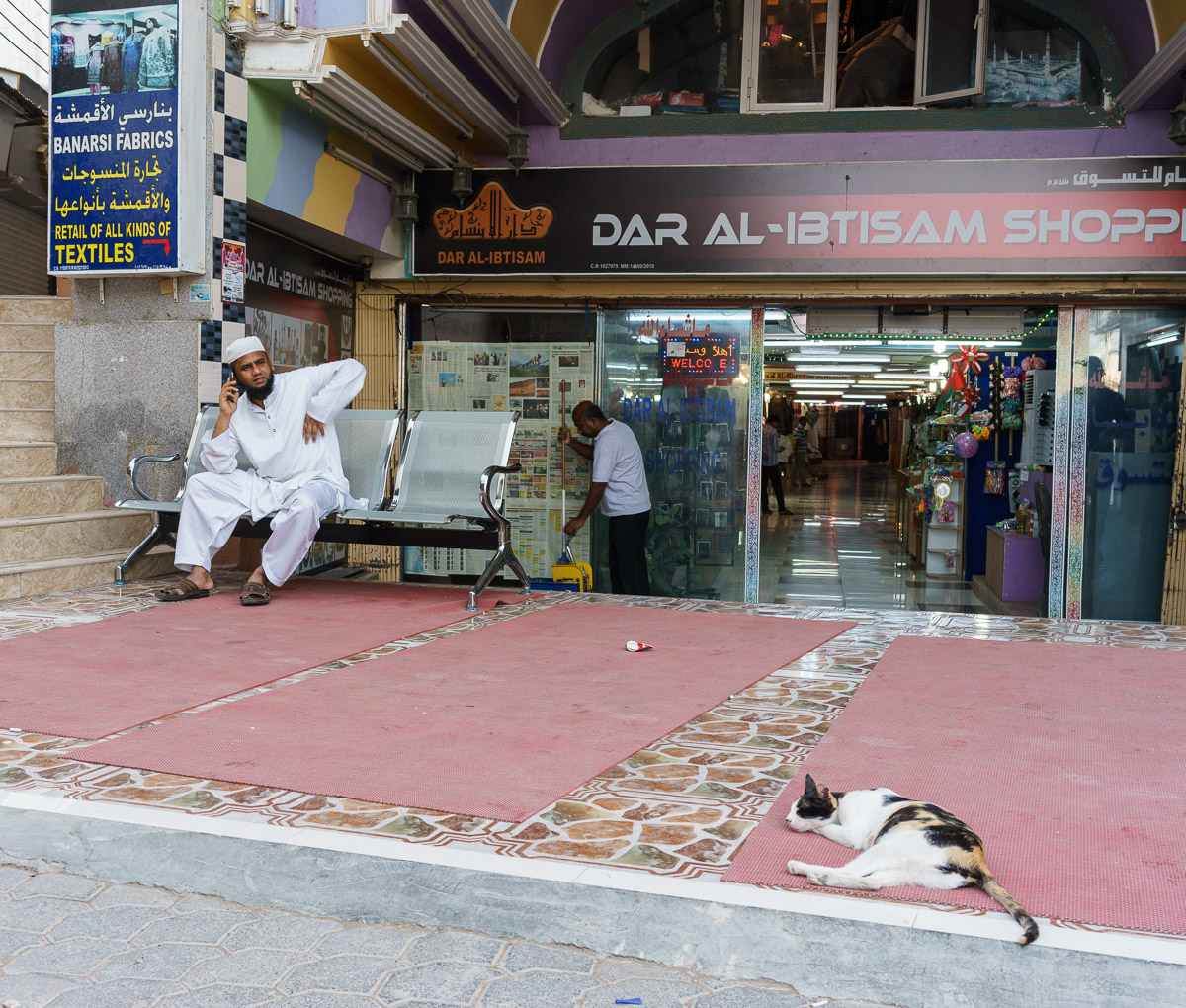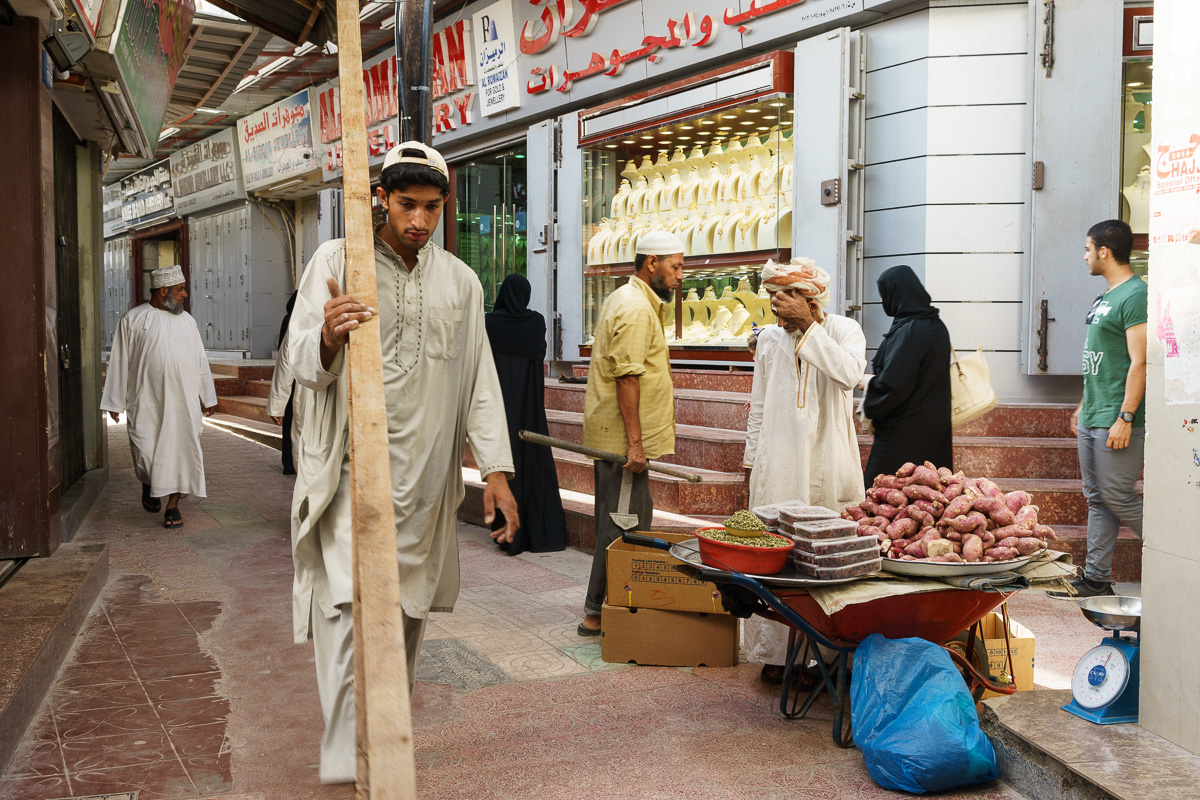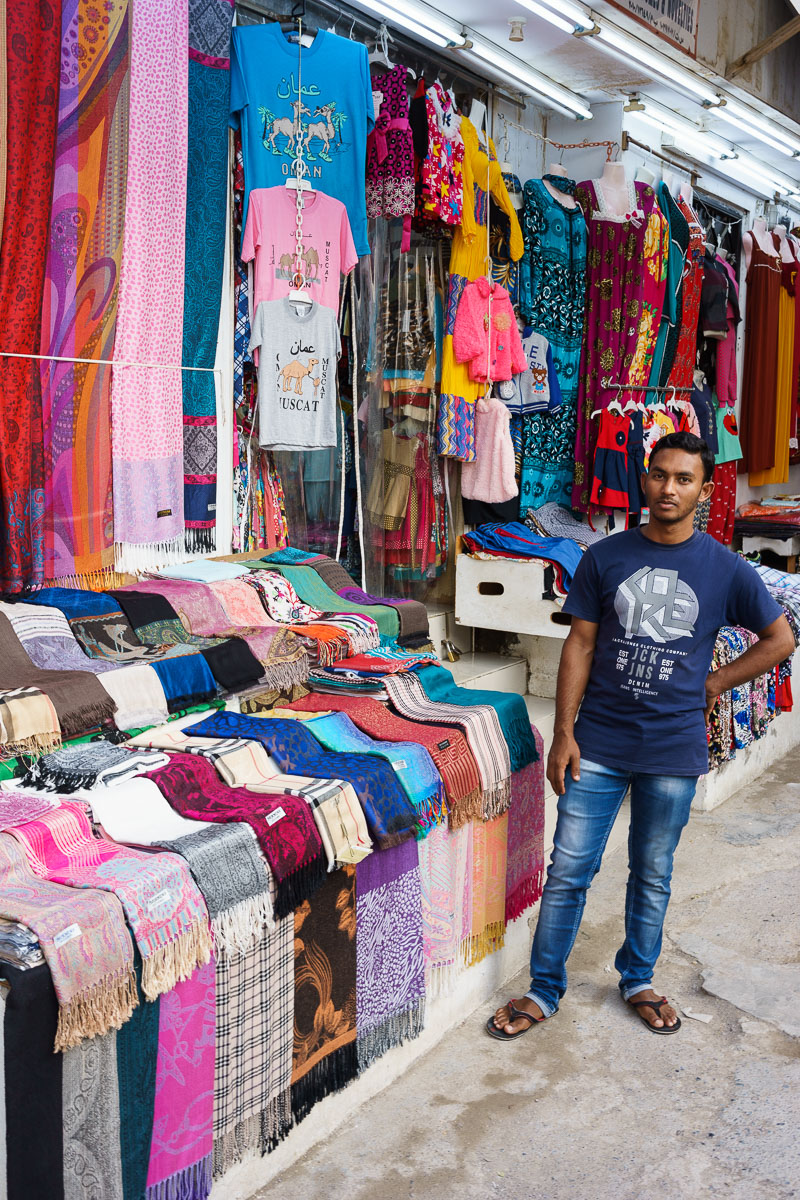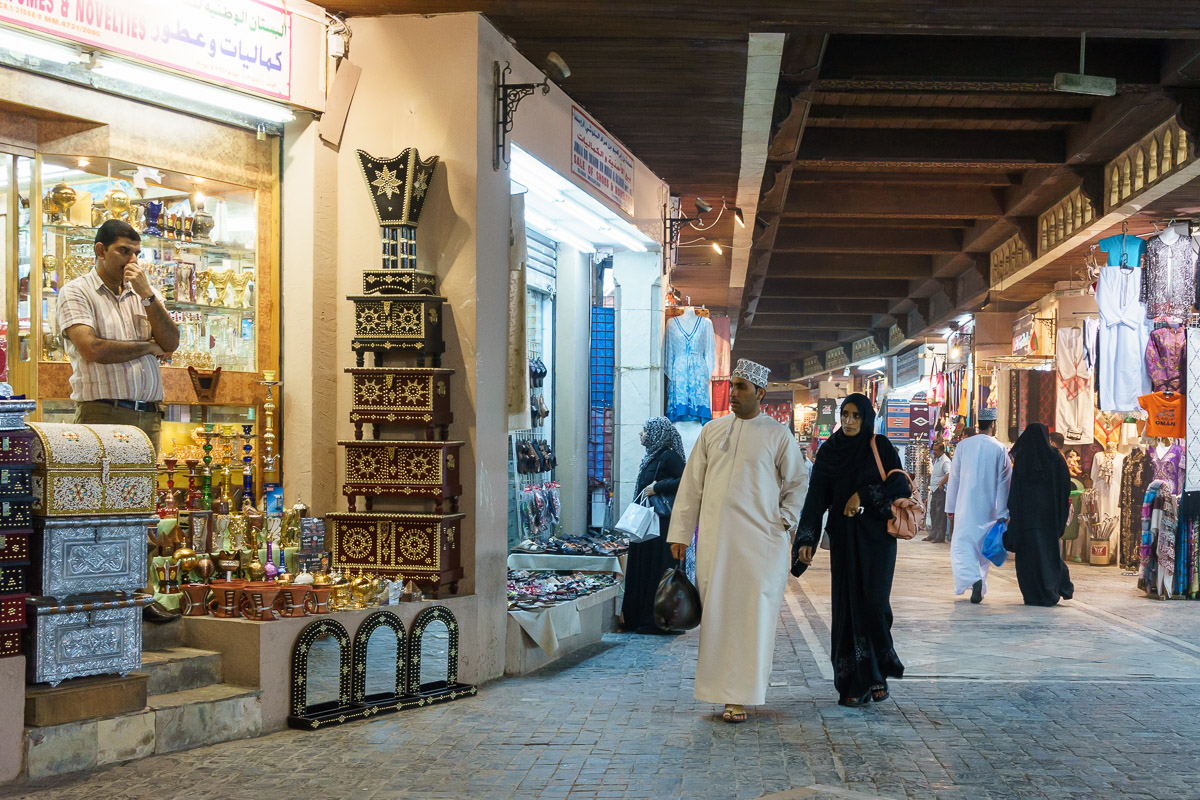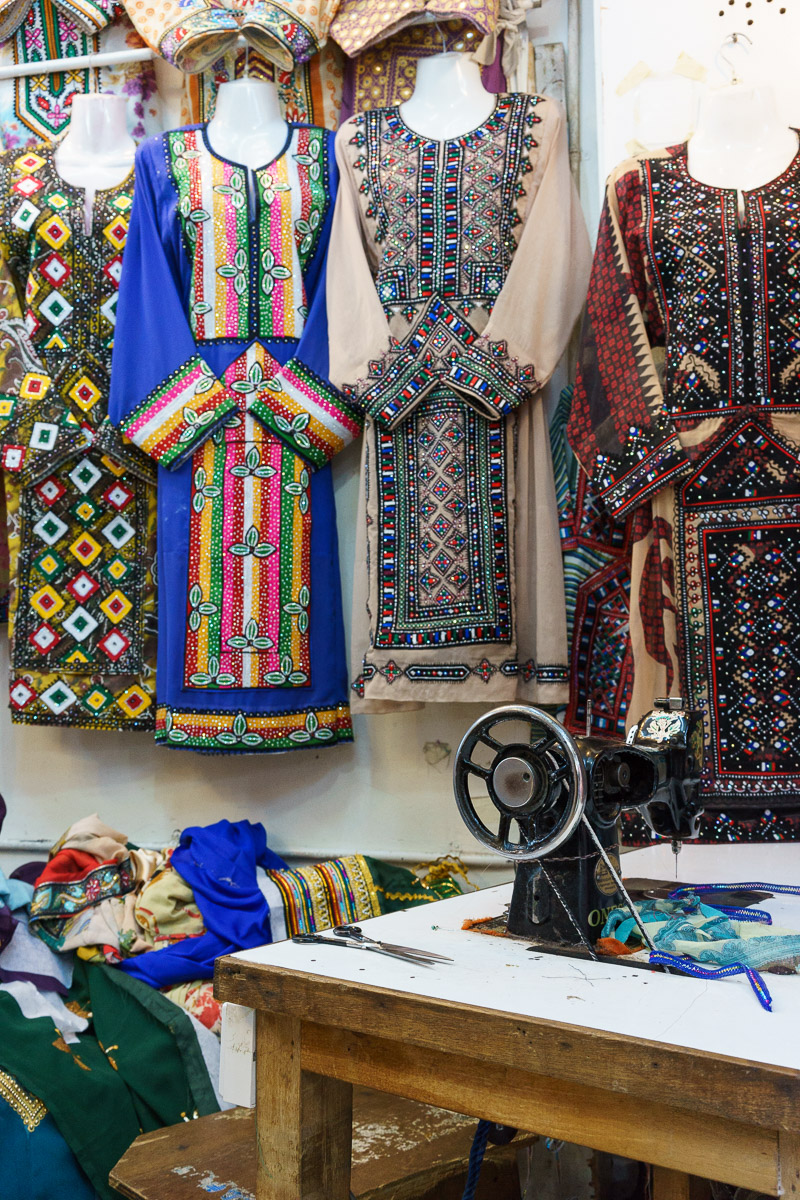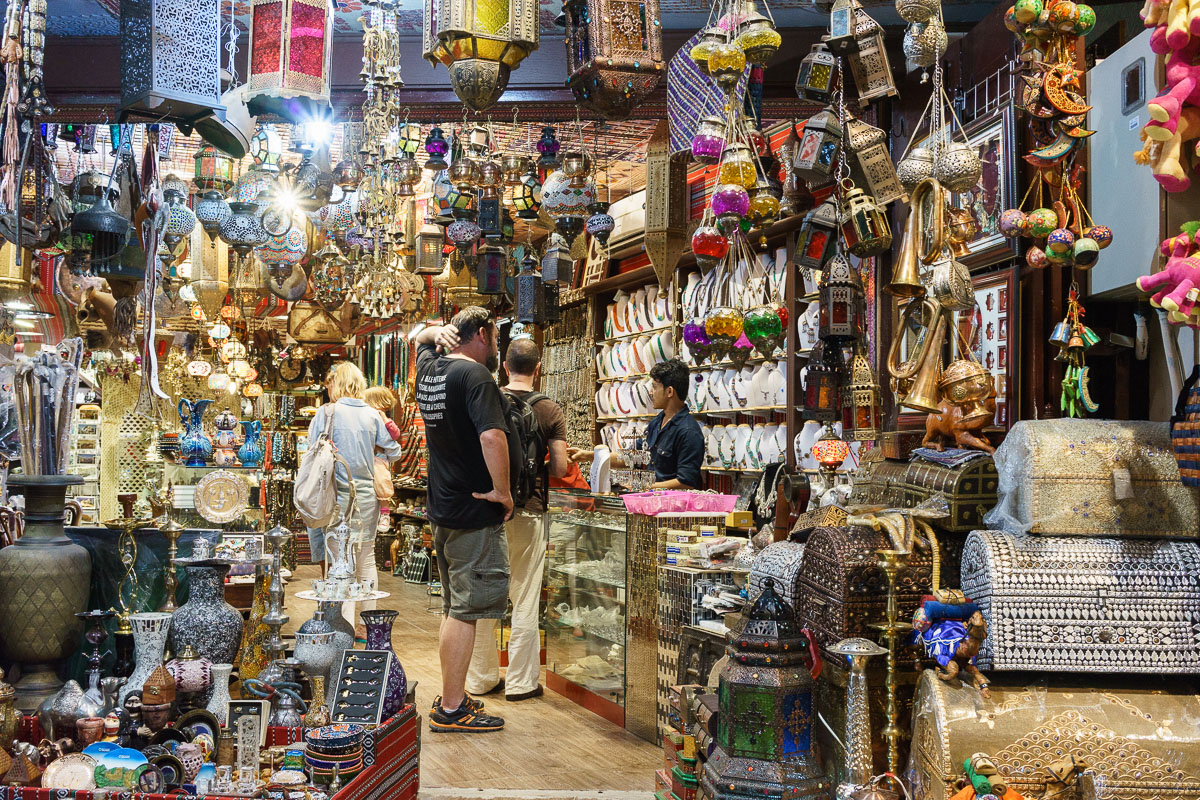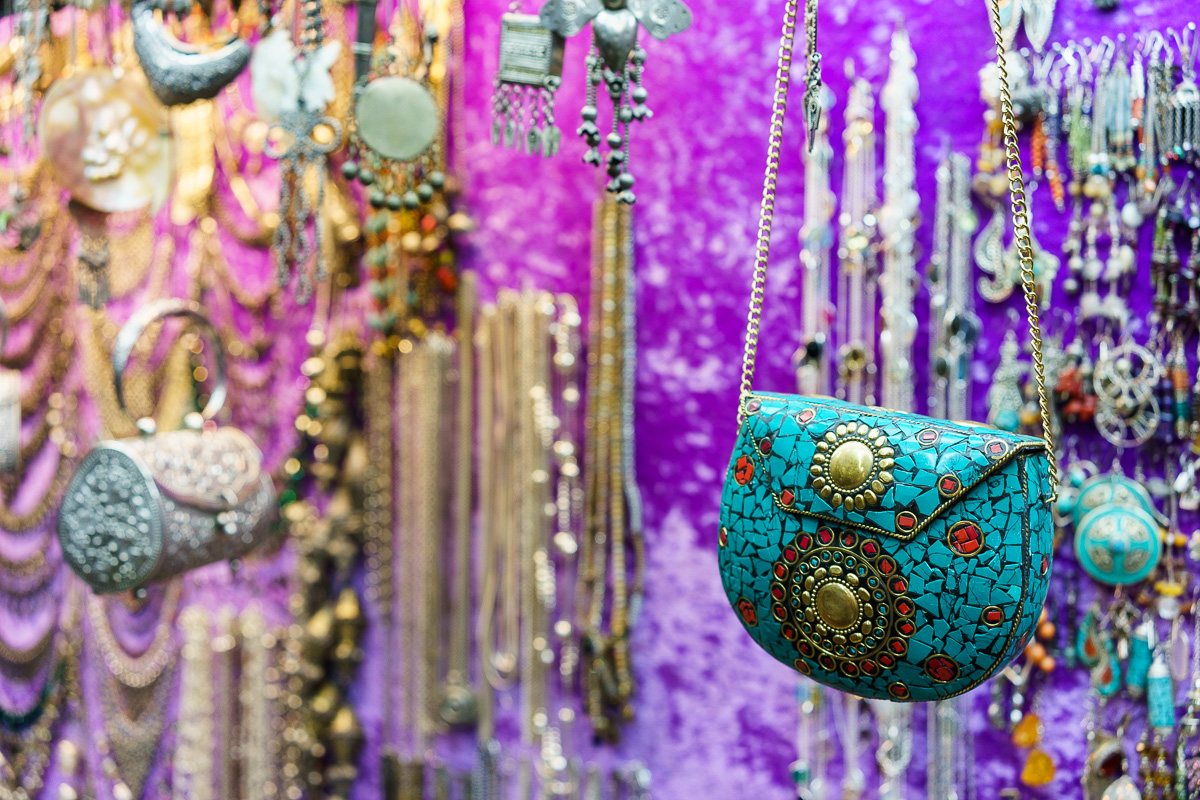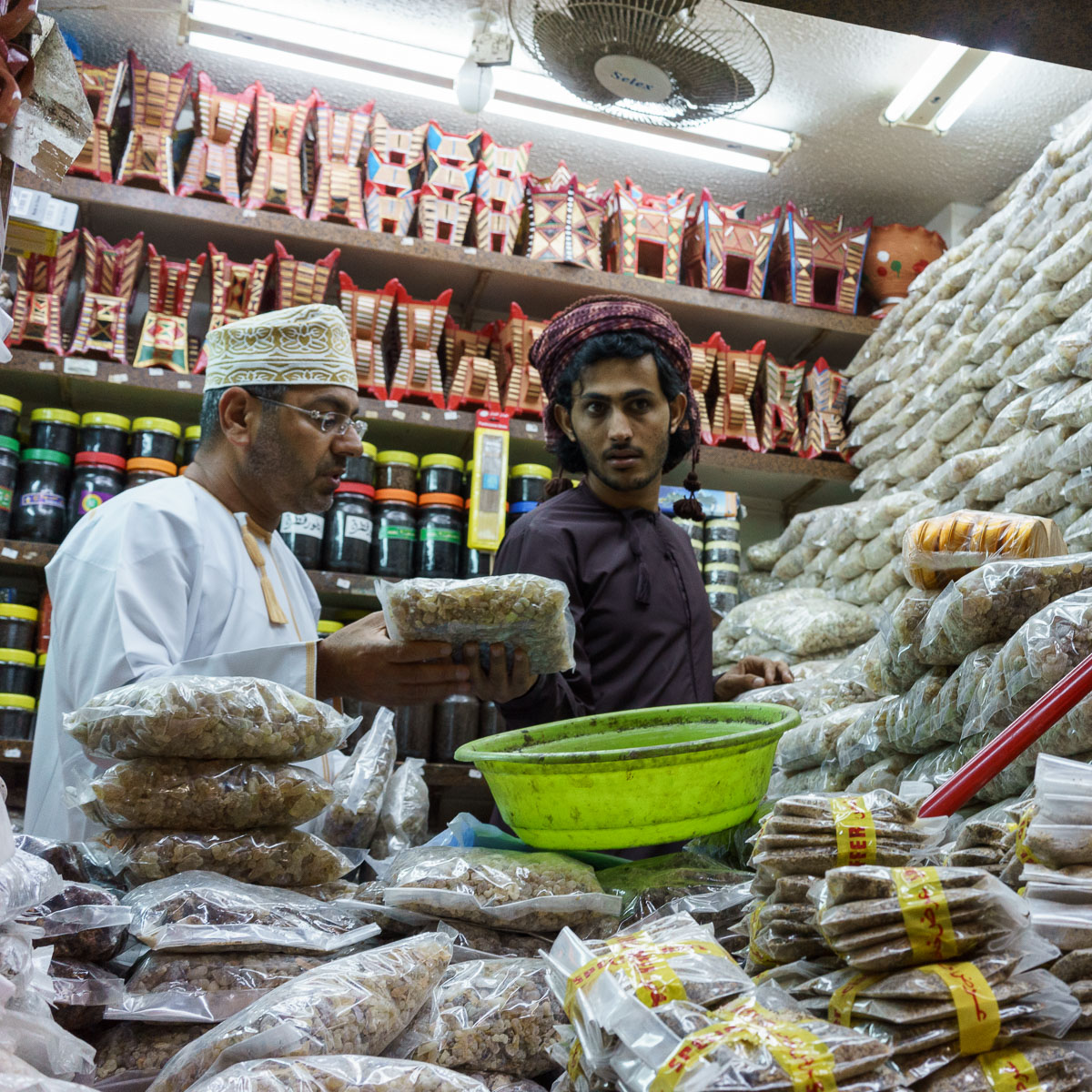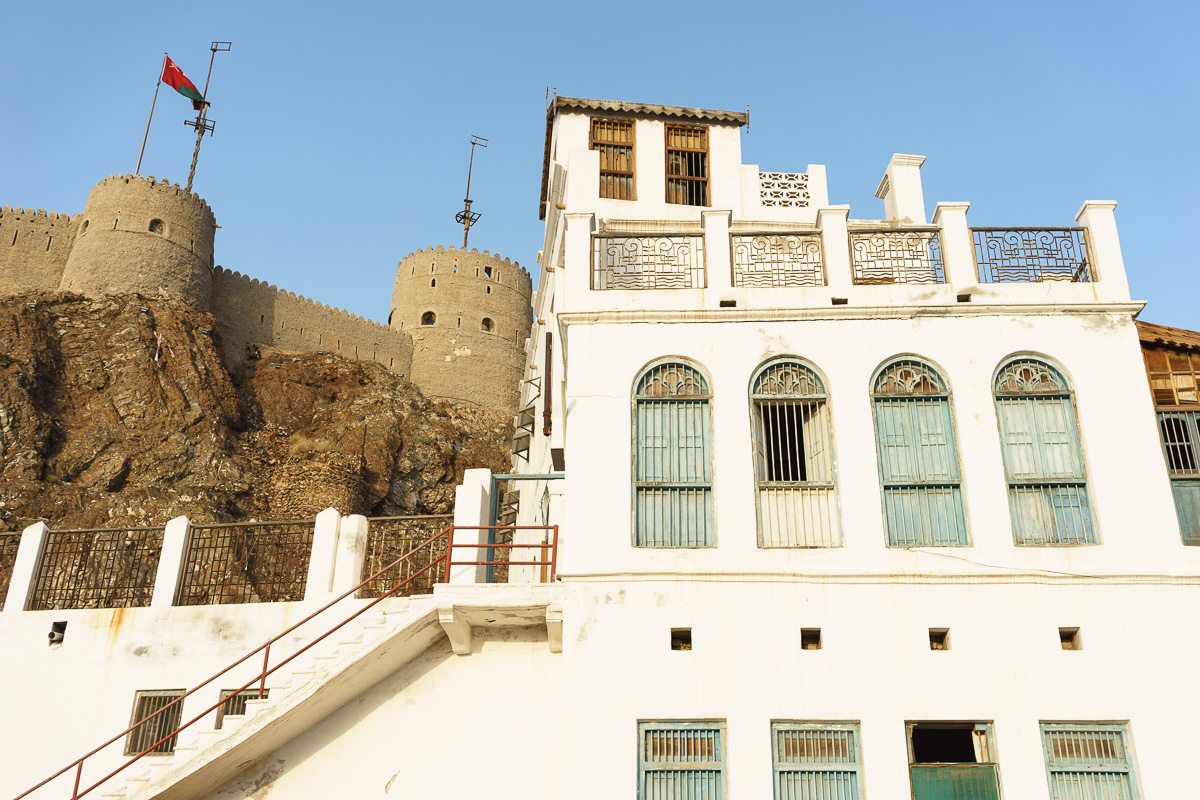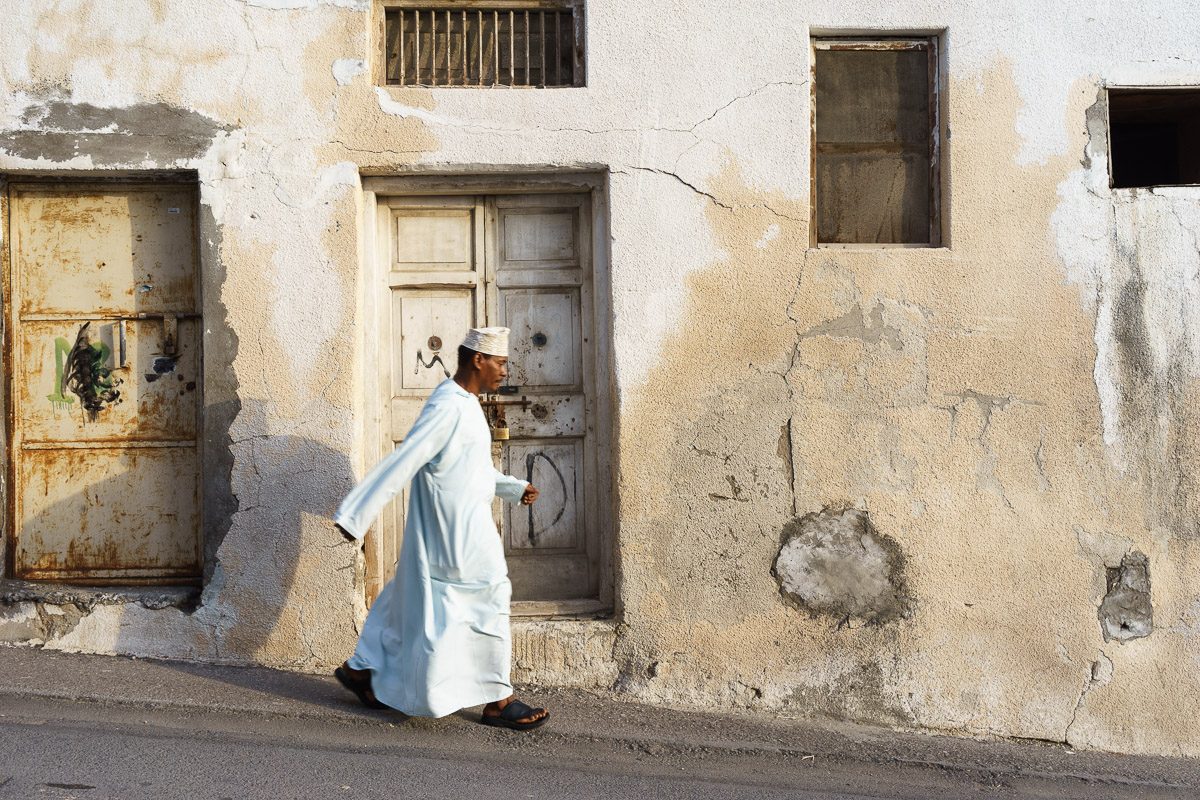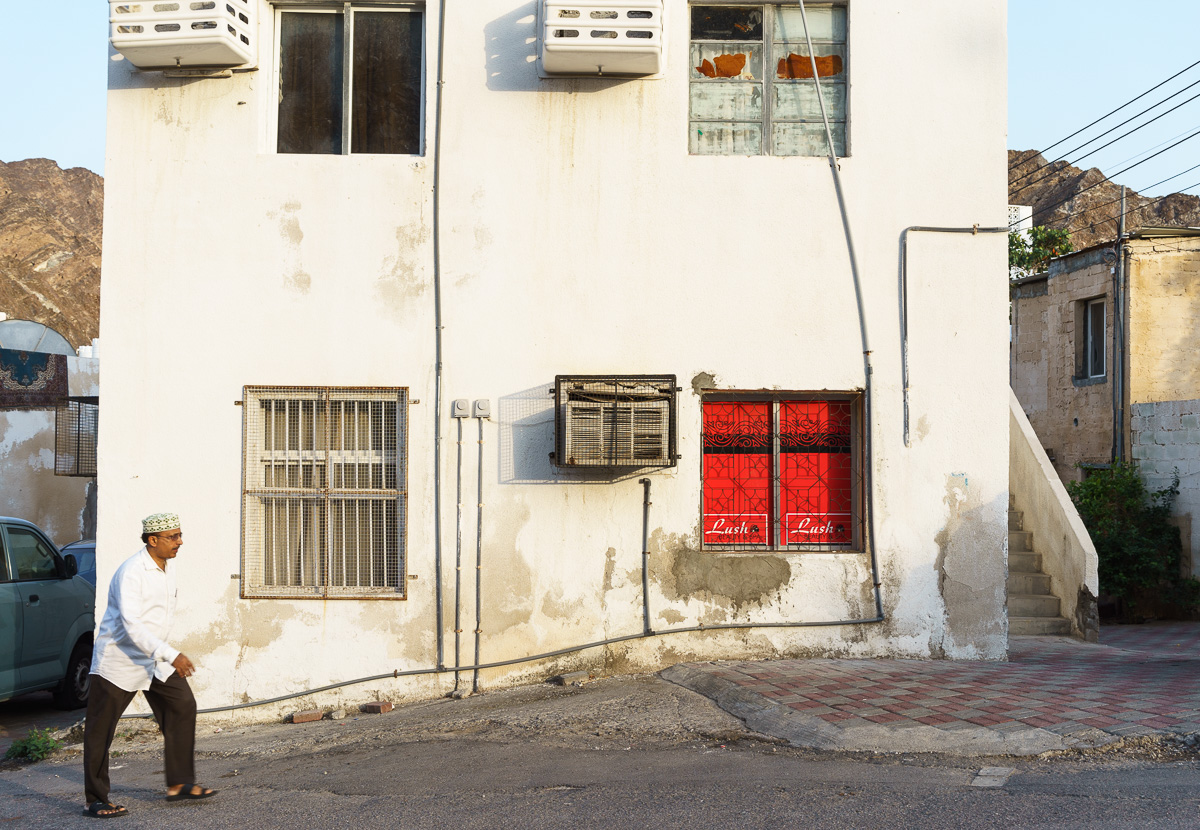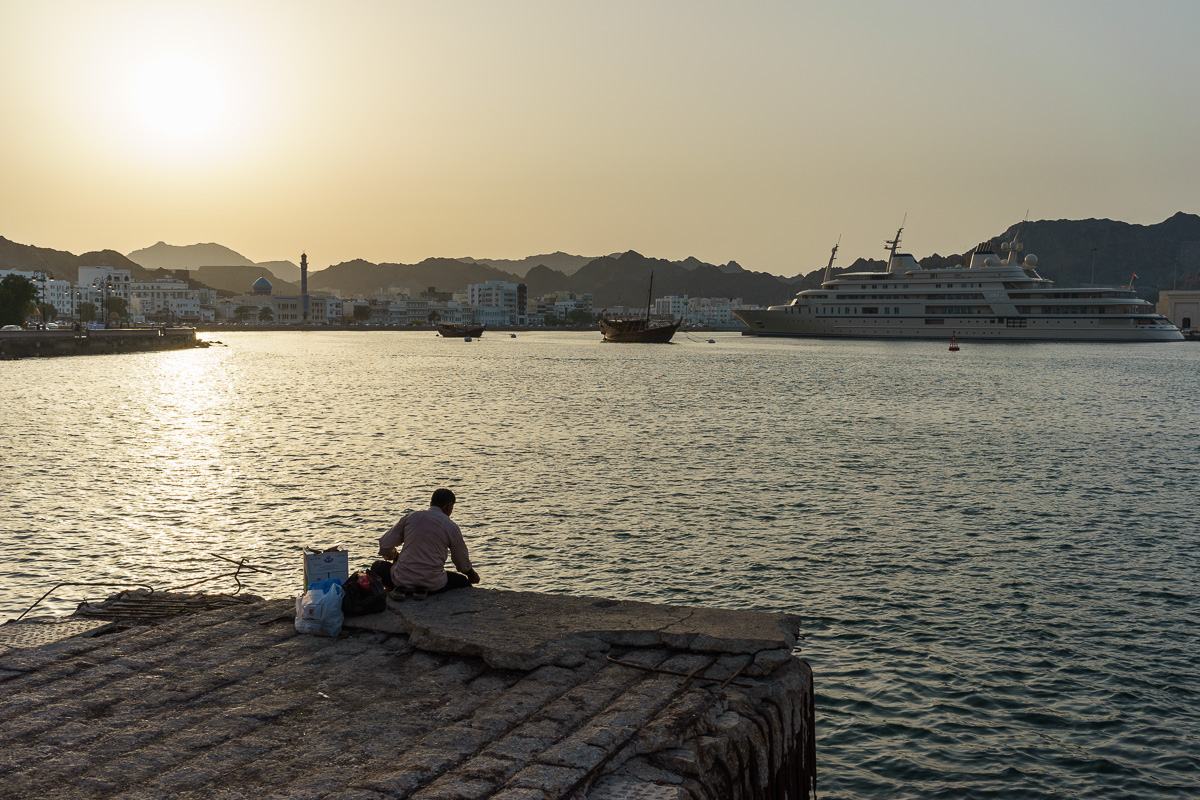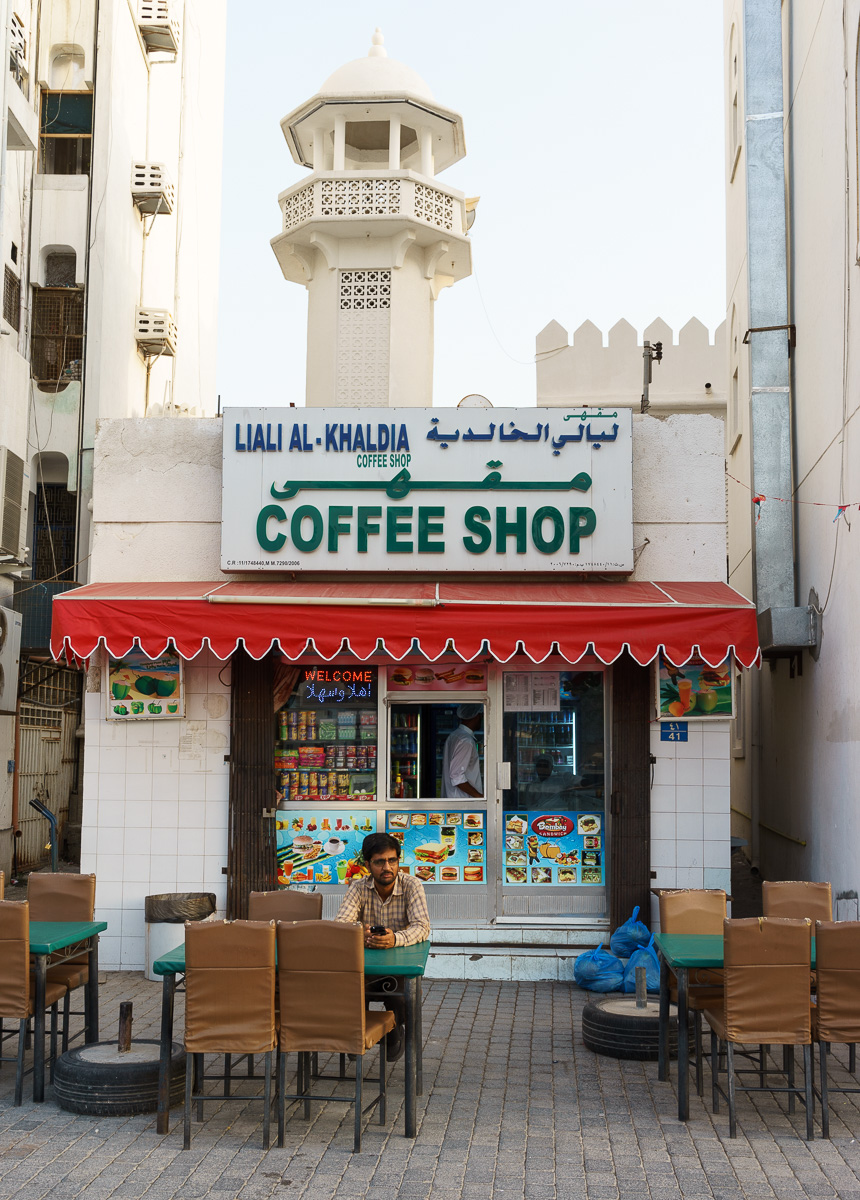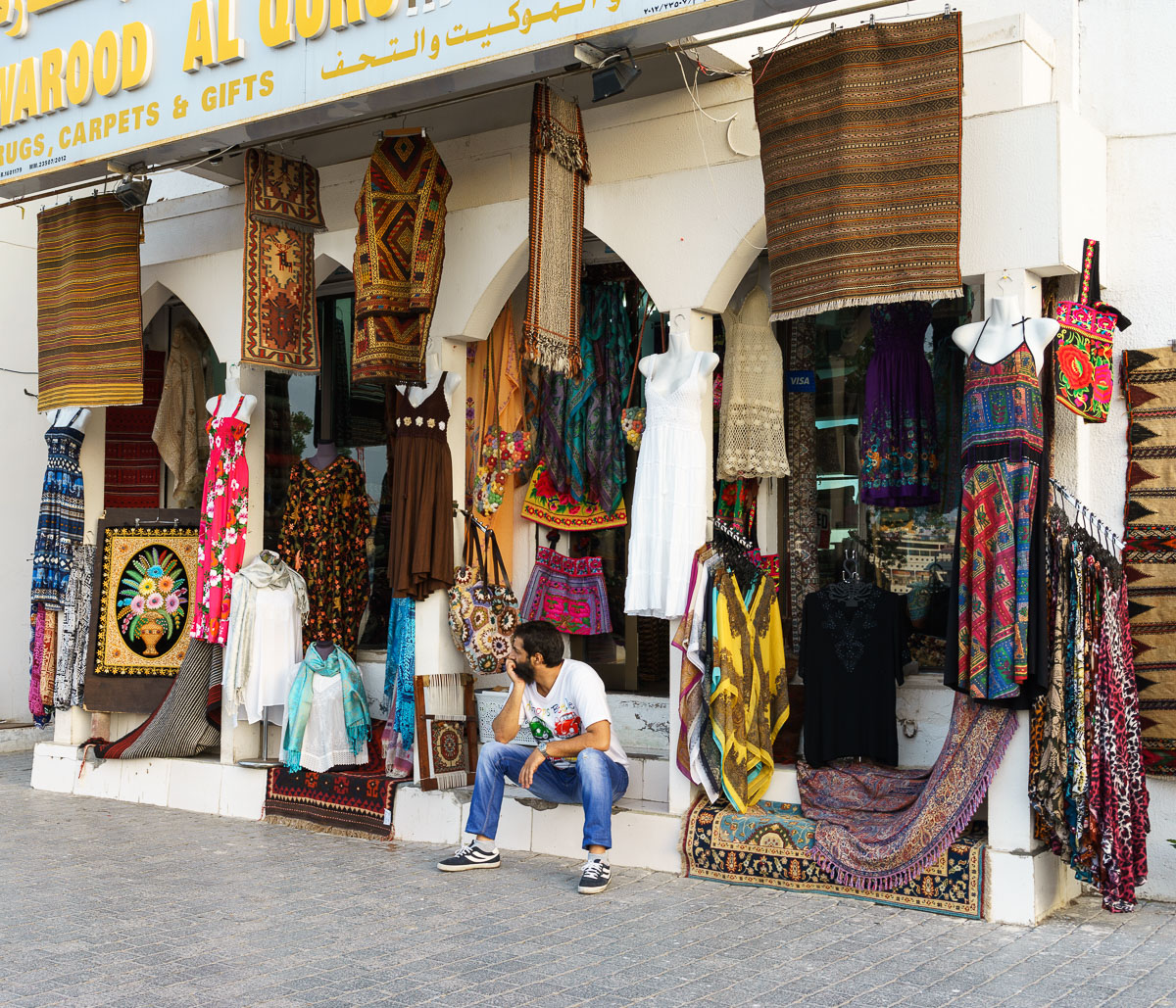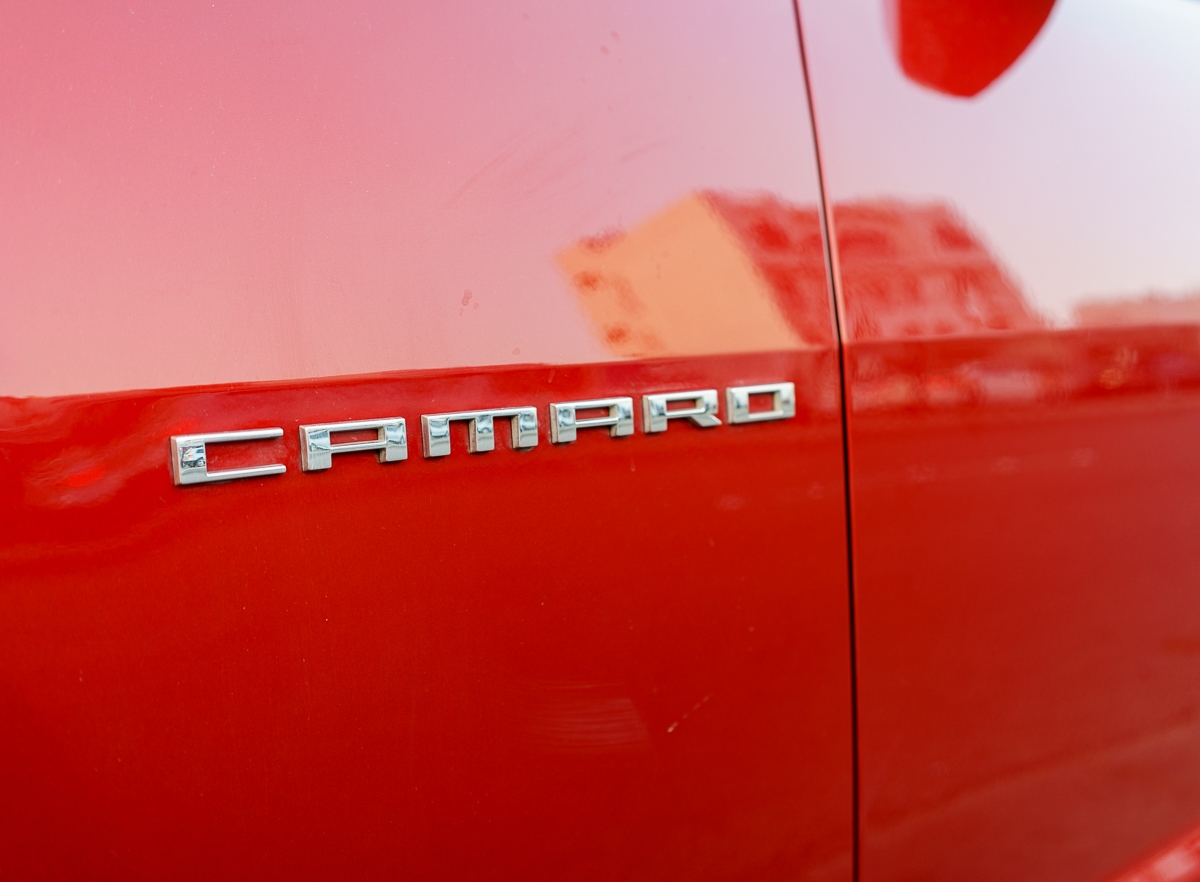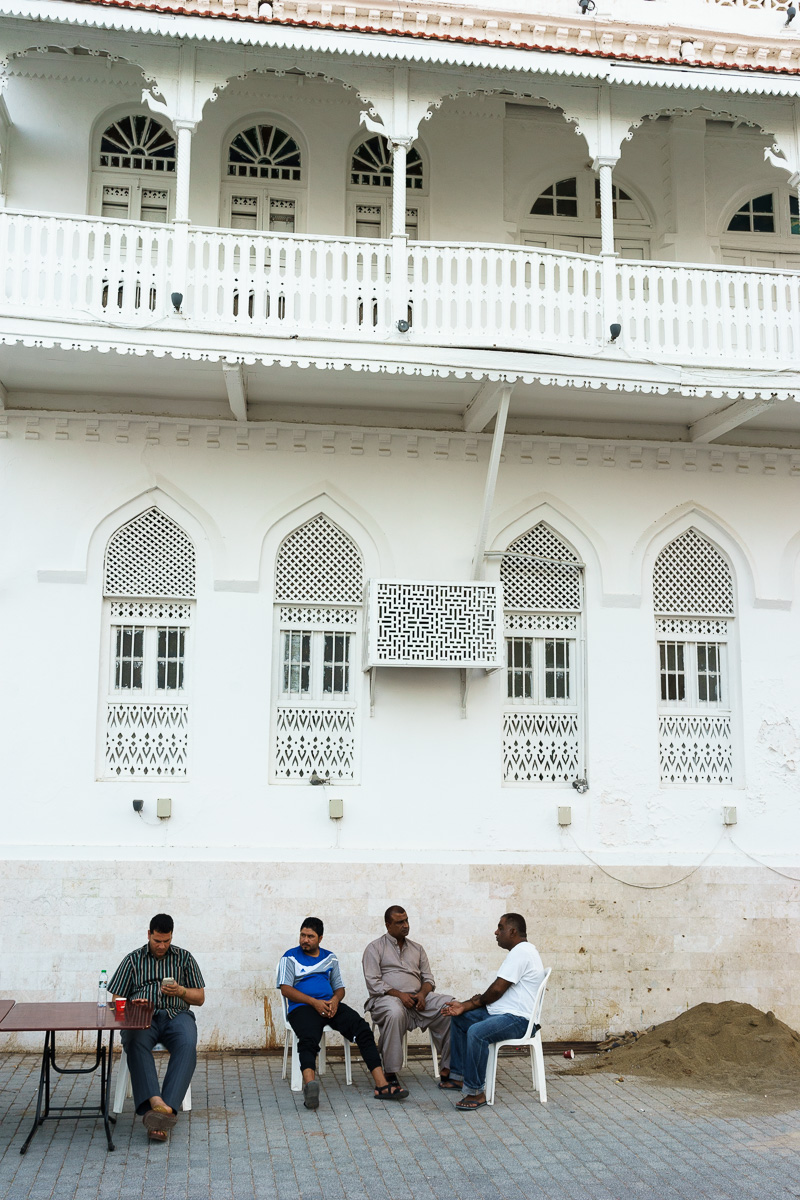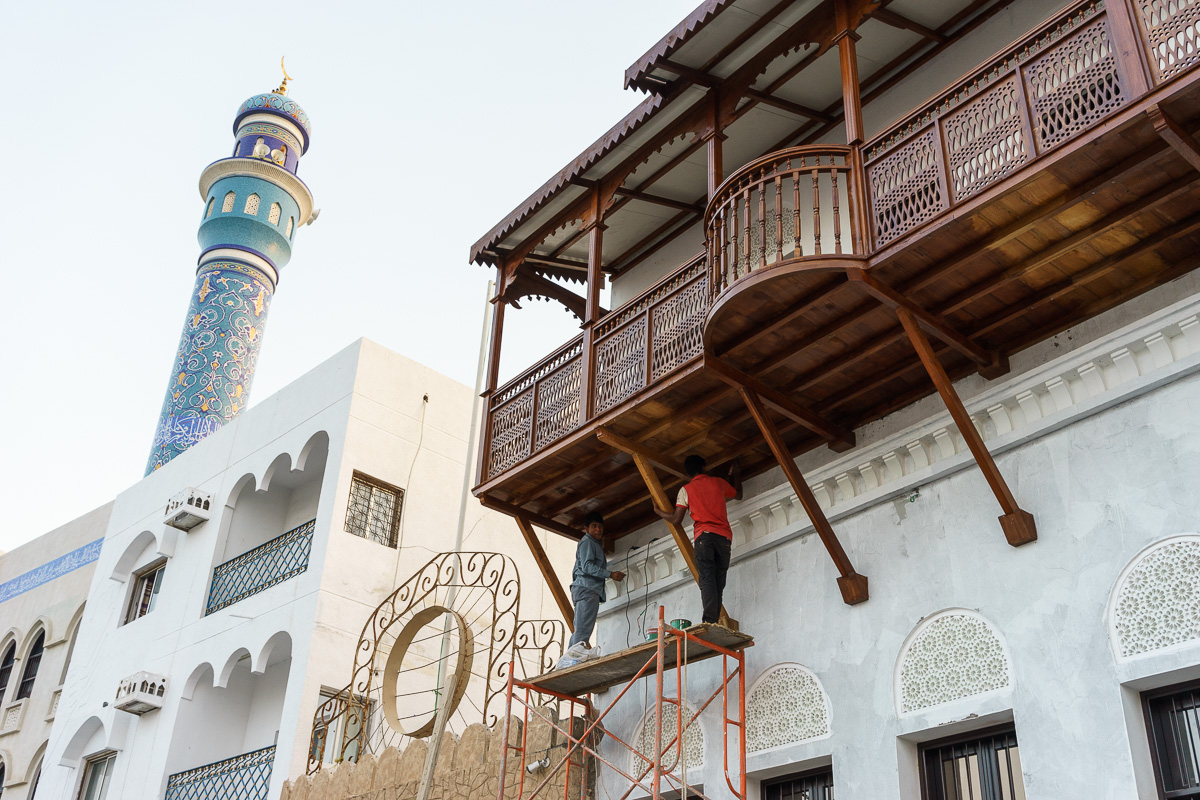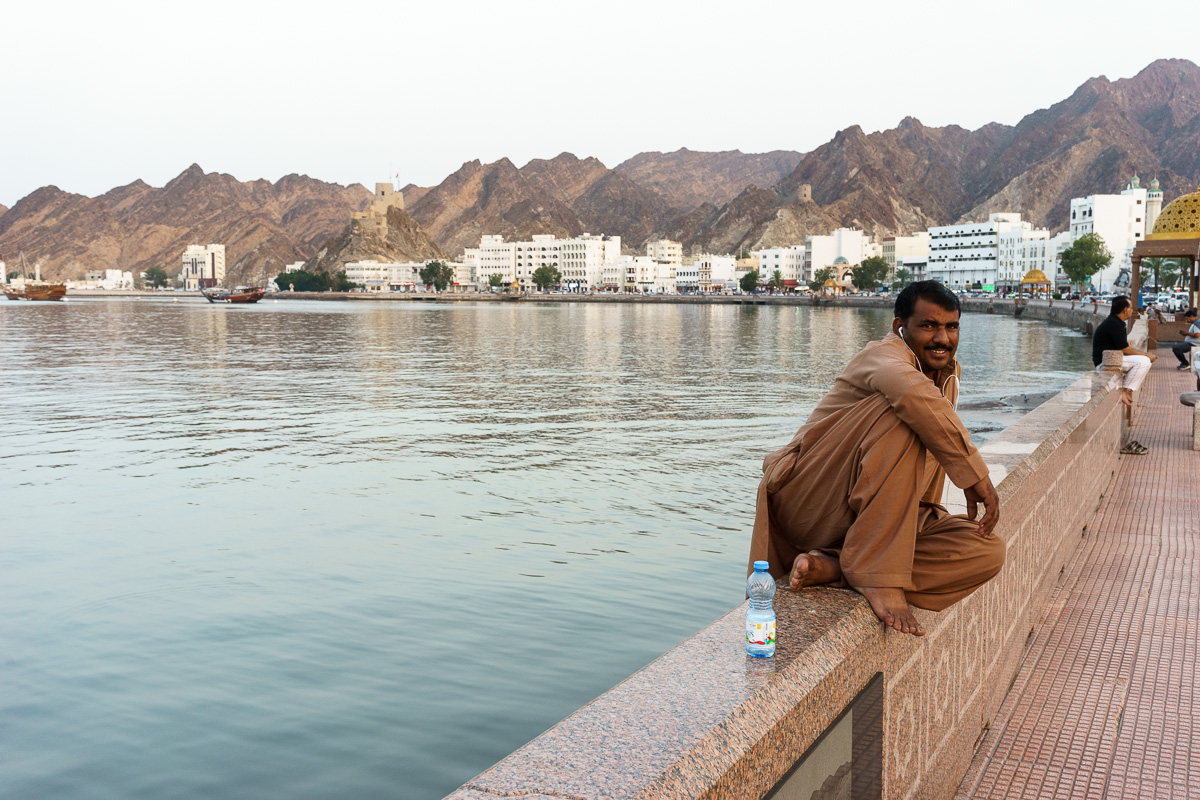This post is more or less a continuation of the last one, in the sense that the photos were taken during the same trip to Muscat, Oman. However, this time I want to describe how I came about making these images, and how they ended up like this, in black and white.
The first two photos were taken just outside my hotel, in a seaside walk that is flanked by some trees. On a late night walk, I noticed that some trees were in bloom (the frangipanis), and I imagined that they would make some interesting subjects at dawn. So I planned accordingly, and the next morning I woke up early and went out shooting. As a bonus, the sky was stormy and the light soft, providing and interesting background. I immediately thought that I had good material for black and white images. I ended up with a composition showing the whole tree, and another one showing branches “reaching” into the sky, and into each other. Some quick adjustments in Silver Effex, and all was done.
For the next pair, the story was different. These were taken in Wadi Bani Kharus, during a geological field trip in the mountains. I was excited to be back in an area that I know very well, having lived in Oman for 7 years. In terms of landscape, the Oman Mountains provide some of the most picturesque and rough scenery, almost primeval in character. It was late afternoon when we parked our vehicles near a small village. The houses hugging the mountainside, and the ridges against the sky, made for a very typical shot. On the way out, we caught the last rays of sunshine filtering through the haze, and silhouetting the ridges; to somehow enhance the primeval feel of the instant, I opted for an antique plate effect for the black and white conversion.
Looking at the images, they remind me of what it felt like taking that morning stroll, or being inside the mountain range.
